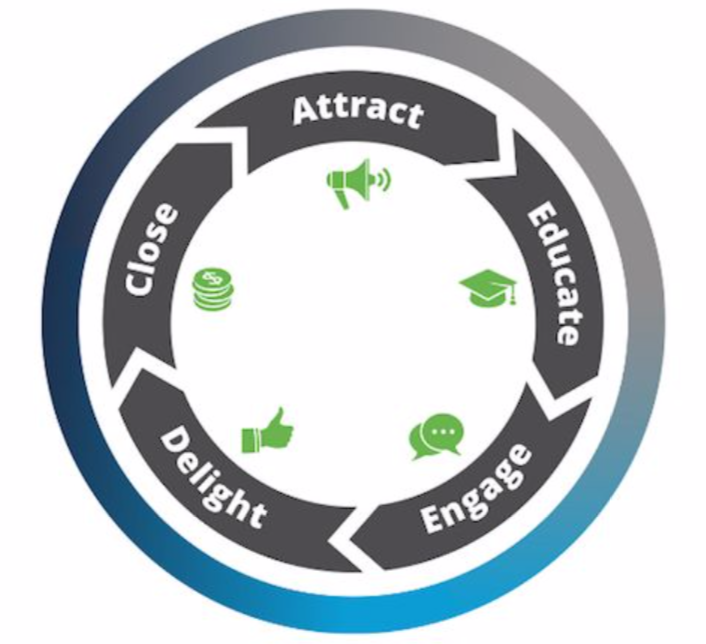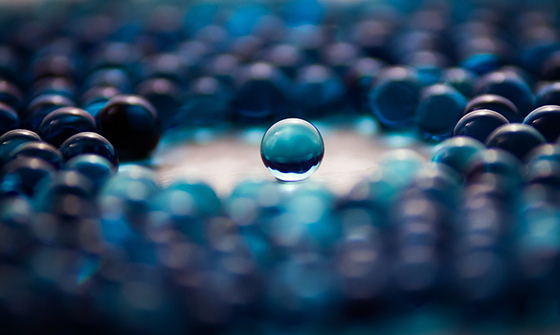
Written By: Amanda Hicken | Sep 9, 2015 12:00:00 AM
By Amanda Hicken, Senior Manager of Strategic Content, PR NewsWire
Because I've managed a number of blogs over the years, I'm familiar with how tempting it is to find the "magic bullet" to blog promotion - that one thing that will lead all your key stakeholders to the doorstep of your content. Unfortunately, it just doesn’t exist. There's no "cure-all formula."
While there are some best practices that work for the majority of marketers, content promotion is a constantly changing game of trial and error. This means looking beyond your existing audience and experimenting with promotion strategies such as press release distribution that will help you reach new segments and build relationships with influencers.
“Press releases are becoming more common as a way for content marketers and blog managers to drive traffic to their owned media channels,” says Danielle Capriato, Manager of Strategic Communications at PR Newswire. “Using a wire service allows you to reach a wide and often engaged audience through a trusted network of websites vetted by the wire provider. Such a network can be invaluable in building brand awareness and expanding your content’s audience.”
That sounds easier said than done, so I sat down with Danielle and Amanda Eldridge, PR Newswire’s Director of Strategic Channels, to learn how to write a press release that promotes blog posts and other content marketing. Both Danielle and Amanda speak from experience, with Danielle using press releases to promote PR Newswire’s blog posts and white papers, and Amanda using them for the past four years to promote the PR Toolkit, PR Newswire’s small business education program.
Here are their six steps to guide your content release strategy from start to finish.
Step 1: Identify your press release goals. Your first step is to decide what success looks like for your press release plan. To do this, you need to go back to the goals of your content marketing strategy. “If your primary goal is driving traffic to your blog,” says Danielle, “your press release strategy should include regularly issuing releases with quality links back to blog posts. If your focus is more on lead generation, make sure the releases you send are written with the target buyers’ preferences in mind.”
Step 2: Decide on your press release’s format. There is no one-size-fits-all formula for writing a press release. Personnel announcements are written differently than trade show news and trade show news is written differently than financial earnings announcements. “Ideally, you should experiment with a number of different formats for your press releases to see which works best in helping you reach your content marketing goals,” says Danielle.
When writing a press release promoting your content marketing, you have a number of options to choose from.
Short Promo Hyperlinked to Content: “This is a particularly common approach, and a good way to drive traffic to the original content,” says Danielle. “By briefly summarizing the post and linking to your blog, you pique the interest of your audience and encourage them to click on, download or subscribe to your content.” Amanda prefers this format for her PR Toolkit content releases: “We focus on providing a teaser of the content with a couple of paragraphs that includes key takeaways in a bolded and bullet-style format.”
Content Round-ups: Take the content teaser one step further by promoting multiple blog posts or pieces of content in a press release. This works well if you have a content series connected together by a central theme. However, Danielle says, “A possible downside with this format is that including multiple links or calls-to-action may dilute your audience’s response, so be strategic in how many and which links you include.”
Full Content Syndication: If your primary goal is getting your content seen by as many people as possible, consider syndication of your full blog post. “Republishing a blog post in this way will probably drive less traffic to your original content,” Danielle cautions, “but could help raise brand awareness or establish you or your brand as a thought leader. Be sure to include a quality link back to your blog, as the biggest risk with this type of syndication is in diverting traffic from the blog if readers choose to stay on the syndicate sites.”
Step 3: Nail down the nuts and bolts. Once you pick a format, it’s time to dive into the details. Regardless of which release format you go with, you’ll need to cross the following items off your list.
Headline: Your headline’s goal is two-fold, says Amanda: Capture attention and convey information. You want your headline to be short enough to encourage easy sharing on social media. Shoot for less than 100 characters, with the most important information in the first half of the headline so that it doesn’t get cut off in search results.
However, just because your headline needs to be short in length, doesn’t mean it needs to be short in meaning. Danielle says, “Be descriptive so readers know what they’re getting into with the rest of the press release.” It should also be different from the blog post or original content’s headline.
The Hook: You need to give your audience a reason to click over to your blog post. Ask yourself: Why should someone read your release? Why should they be interested in your content? “Set the right scene in your press release, and make it easy for new readers to access your owned media platforms and learn more about your company,” says Danielle.
Amanda uses the following guide when drafting her blog promotion releases:
1. Identify a challenge that is unique to the target audience
2. Confirm that the piece of content can help alleviate that problem
3. Provide a few actionable examples
4. Include a call to action linking to the complete blog post
Call to Action: Speaking of calls to action, Danielle says that the most common technique is to hyperlink the press release’s first mention of your blog post title to the post. However, she clarifies, “If you choose to send a press release to a traditional wire newsline that reaches newsrooms, it’s important to include a URL in the release that is not anchor text since some sites strip hyperlinks.”
And what about boilerplates? While it’s standard to include a company boilerplate at the end of press releases, you may want to experiment with your content release by including an author bio or ‘about the blog’ section in addition to or in lieu of a formal boilerplate.
Multimedia: Consistently considered one of the biggest drivers of discoverability, photos and videos are a great way to generate attention and get people to click on your content, particularly when you’re considering blog post syndication. While most blog posts and content marketing should include some form of multimedia, not every piece of content is going to naturally lend itself to every type of multimedia — or any at all.
“When in doubt,” recommends Danielle, “don’t hesitate to use a company logo or even the logo for your blog. And in the absence of multimedia, make sure your release is formatted so that it’s easy to read and digest. Bullet points and bold headers can make your release more visually dynamic. ”
Step 4: Determine distribution. Once you’ve written the press release, it’s time to consider distribution. “Clearly identifying the audience that you are hoping to target is the first step you should take before selecting a press release distribution,” recommends Amanda. For PR Toolkit press releases, Amanda usually combines an online-only distribution with distribution to social media since her content is focused on reaching and educating consumers. However, says Danielle, “If you are seeking media pickup or think your content will be appreciated by journalists or other bloggers, a traditional wire distribution that not just reaches websites, but also sends your content into newsrooms and via PR Newswire for Journalists will be most effective at getting your content to those audiences.”
Step 5: Measure the press release’s impact on your content. It costs time and money to produce and promote content. Don’t waste it by neglecting to measure your efforts’ results. “It’s important to keep tabs on engagement to see how your audience is reacting to your content, which can help you adjust your strategy in the future,” Danielle says.
“What you track depends on your goals: If your target is more blog traffic, checking the clickthrough rate on your releases is going to give insight into the type of traffic you’re driving through your promotion. If you are syndicating your content marketing to try to establish thought leadership, views of the syndicated content are going to be more helpful.”
Step 6: Rinse and repeat. Every content marketer knows that you have to produce a continuous stream of content for your audience to engage with. And, as we wrote in Why Your Press Release Strategy Shouldn’t Be One and Done, that also includes press releases. When it comes to promoting your content marketing, “a regular cadence of releases is so important,” says Danielle. “For one, it keeps you in the conversation, which is critical for brand awareness. The more visible you are, the more trusted you are likely to become. For the same reason you don’t want to launch a blog only to post there once in a while, you won’t see measurable results until you’ve worked at your press release distribution consistently.”
Add press releases to your marketing department’s editorial calendar so that you remember to do it regularly.
“Because our program has contributors that are developing great content on a consistent basis, we are distributing two releases a week promoting that content,” explains Amanda. “Press release distribution is vital in helping us bring awareness to our brand, build loyalty and educate our audience.”
“It’s like exercise,” adds Danielle. “You can go for a jog once a month, but you probably aren’t going to be prepared for a marathon that way. But a regular routine, practiced over a period of time is going to get you results and set you up for success.”
TMSA Members can receive a 12-month membership to PR Newswire at no charge, and take advantage of more than $2,000 in free and discounted services. Visit the PR Toolkit for great resources in promoting your company, drive traffic to your website, launch a new product or service, and/or announce a new business. > More Details
Tags: Content Marketing

By Nadine Nocero-Tye, Director of Client Services for SyncShow, a TMSA Affiliate Member Customer experience can be defined as any interaction that your organization has with your customer. Thanks to...

By Robert Rose, Chief Strategy Officer of The Content Advisory, the Consulting & Education Group of Content Marketing Institute. For more than 20 years, Rose has been helping marketers to tell their...